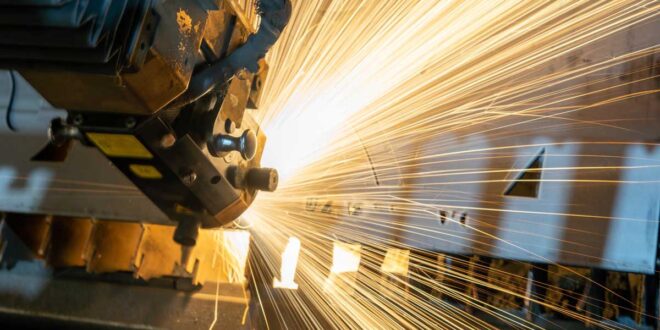Back in the late 1980s, the relocation of American manufacturing to China, labeled the ‘factory of the world,’ became the latest trend in strategic management. As environmental laws tightened around industry, governments implicitly encouraged American industry to pack up and leave.
From the corporation’s perspective, relocating manufacturing to China made good sense. This led to bumper profits for corporate America due to the dramatic cut in manufacturing overheads. Additional flexibility in production allowed corporations to focus almost totally upon marketing, sales, and logistical operations.
As corporation profits soared, the towns and cities that once supported these corporations’ factories became desolate wastelands. America is full of ‘almost’ ghost towns that have become ghettos for the unemployed. Total micro-economic ecosystems were destroyed that no longer shared in the well-being of once manufacturing-based corporations.
However, on the aggregate US front, consumers benefitted from the super-low prices of garments, footwear, home appliances, and other miscellaneous merchandise.
For China, the inflow of US manufacturing was a bonanza. New industrial areas grew up out of nowhere with adjoining towns to supply a workforce. These industries introduced to China new technologies and processes, allowing a cascade of part manufacturing suppliers to grow up around them. For example, a consumer manufacturing plant would attract packaging, plastic, carton, label, and chemical suppliers, all dependent upon American industry.
The American manufacturing allowed the Chinese economy to grow, which earned valuable foreign exchange and employed whole towns. This very much assisted in the alleviation of poverty and domestic development from the 1990s into the new millennium.
Even though the relocation of American manufacturing to China led to a trade deficit of approximately US $295 billion in 2024, the boost in corporation profits represented the economics of comparative advantage. Thus, the exodus of American manufacturing to China was seen as a win-win situation.
The US and China’s economies became totally intertwined—an espoused success story of globalism at the time.
The China Syndrome
China, after an early period of issues with the pioneers, became a manufacturer’s paradise for large corporations. New entrants received land and tax incentives, labor costs were low, energy costs were cheap, and EPA and OSHA regulations set low barriers.
For American middle-sized companies and SMEs, clusters of industry-specific OEM manufacturers are set up around the country.
Shenzhen became the hub for electronic products, and Dongguan for toys, textiles, and other assembly-type products. Guangzhou for electronics and auto parts, Foshan for home appliances, Yiwu for household items and toys, Ningbo for apparel and plastics, Jiangsu for precision-made products, Wuxi for electronics and home appliances, Xuzhou for construction and consumer hardware products, Quanzhou for footwear, and Xiamen for apparel, electronics, and sporting goods. Fujian for textiles and footwear, Qingdao for home appliances, Yantai for agricultural products, food processing equipment, and packaging equipment, Shandong for large appliances and industrial goods, Chongqing for notebooks and vehicle components, Hunan for machinery manufacture, and Hefei for home appliances.
All the above areas are well connected to ports and logistical systems.
Products made in the above locations were not only cheaper than what Europe or the United States could manufacture, but OEMs could be flexible in the designs and specifications they provided customers. This alleviated the need for many companies to embark on their own research and development divisions, leading to even more cost savings. R&D and new product development could cost a company up to 10 percent of its revenue per annum to keep up with changing markets. Mass retailers like Walmart set up their own buying offices in China, cutting out wholesaler/importers, thus lowering costs even further for consumers while making even greater margins.
Some logistic chains were developed so as to go straight from OEM manufacturers in China to retailers and online marketing companies across the world. These companies could come out with completely new ranges every three months. The new logistic systems and product flexibility created new forms of competitive advantages that allowed the online product industry to grow massively over the last 5 years. Consumer e-markets are estimated to be valued at US $4.5 trillion in 2024.
Can American manufacturing be revitalized?
Any industry that requires major human input during the manufacturing and assembly processes may find it an insurmountable task to relocate back to the United States. These industries would include apparel, footwear, toys, and other miscellaneous products with very short life cycles that need aesthetic adjustment in a periodic manner, i.e., Christmas decorations.
Raw material procurement will be a major barrier for American companies returning from China, as many of the supplier clusters, once relied upon by manufacturers, no longer exist. Other services, such as metal foundries, engineering shops, and machine manufacturers, may have closed down long ago. Returning US companies are leaving behind a cluster of suppliers that kept their operations going with the materials and parts required to manufacture and assemble.
Environmental and occupational health regulation standards in the US may be very stringent for manufacturers to meet after the relative laxity of Chinese regulations. These are the issues that were part of the decision criteria to move from the US in the first place. There might be some hostile state government towards industry returning to their jurisdictions.
With the focus on renewable energies like solar and wind power, energy costs will be extremely high. These are also questions about some parts of the United States, like California, about whether there will be enough energy available to service industry relocation.
The work ethic of Americans is now very different from 30 years ago. Many may not want to work within an industrial environment. Productivity could become a major issue, particularly in the apparel industries. In mass production scenarios, high automation will be required. So, the question is whether there will be enough skilled manufacturing engineers with the experience and skills needed to assist in the setting up of manufacturing facilities and shop floors. The company towns that once supported these American corporations just don’t exist anymore. Finding and attracting back the engineers they need may be almost impossible.
There is the risk that the relocation of American companies back to the United States will force a two-tiered labor market, where immigrants are used as cheap labor.
The prime aim of the Trump tariffs is to cajole American companies to return to the United States. This is an inspiring goal, but the challenges are immense. The cost base of American companies on the ground in the United States could be two or three times what these corporations once enjoyed in China. On the other side, remaining in China may leave US corporations dealing with a hostile tariff regime in their home market—the United States.
Corporations are now undertaking feasibility studies on relocating back to the United States. They will find themselves with a massive headache. In many, if not most cases, relocation of American manufacturing back to the United States may not be feasible without financial assistance. With US public debt currently at US $36 trillion, that’s an impossibility.
Any relocation of American industry back to the United States will also leave China with major collateral damage. Regions that US companies abandon could go into mass recessions and high unemployment. This could even lead to civil unrest in China.
The shipping and logistics industries would collapse, which could have dire economic consequences.
The reality of any corporation being able to physically relocate back to the United States would have to be examined on a case-by-case basis.
The whole concept of manufacturing in China was based upon the ideology of building mass manufacturing facilities with economies of scale so large, it needs rethinking. Maybe the Trump tariffs are a call to return to manufacturing in a region for a region and surrounding market, i.e., the United States. Economies of scale are not everything within a company. Smaller-scale manufacturing brings economic prosperity to the areas that surround the business.
On the other side, without China, consumer prices will be much higher. There is a need to examine the whole issue, industry by industry. It’s not all economics; social value judgments need to be made that corporations forgot back in 1990.
This is the management challenge for the second half of the 2020s and 2030s. Smaller, leaner, flexible manufacturing, where corporations may have to themselves be decoupled from conglomerates—just like the Seven Sisters, the telephone companies before them, so companies can once again serve their communities.
Management must go back to the future to survive any decoupling from China.
 Geostrategic Media Political Commentary, Analysis, Security, Defense
Geostrategic Media Political Commentary, Analysis, Security, Defense





